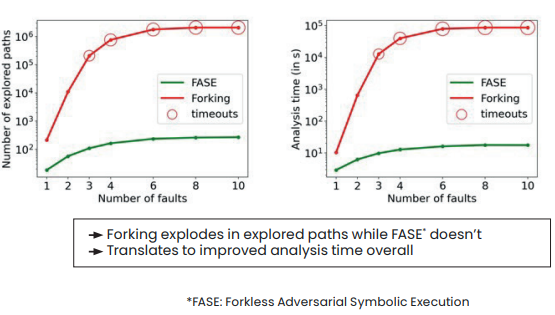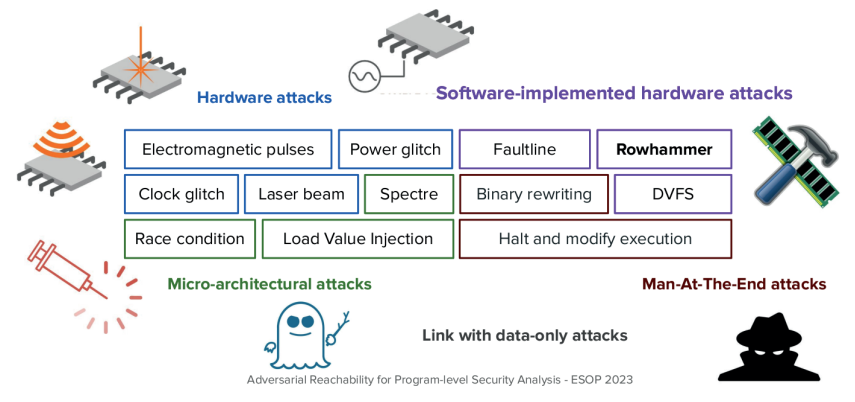
Today’s software security analysis methods can simulate so-called “weak” attackers capable only of introducing bad data into software. A “powerful” attacker can affect more than just data with attacks like:
Powerful attackers cannot be represented in the reachability analyses generally used to determine the existence of a path to an identified system vulnerability. The first challenge is to design an environment for effective automated reasoning about a powerful attacker’s impact on a program. The second challenge is to design an efficient algorithm to determine a program’s vulnerability to a given attacker model while avoiding combinatorial explosion, especially in the event of multiple attacks. Today’s techniques cannot be scaled up and do not provide a formalization of the underlying problem.


Our original algorithm, Adversarial Symbolic Execution (ASE), can analyze a program’s execution paths in the presence of a powerful attacker by extending the symbolic execution used in standard code analysis and the conventional concept of reachability. Unlike state-of-the-art techniques, a new “forkless” vulnerability injection technique does not create additional paths to explore, preventing combinatorial explosion. The algorithm was implemented as a new module (BINSEC/ASE) of our BINSEC code analysis software.
Tests completed with BINSEC revealed major improvements in performance, both in terms of the number of paths explored and in terms of analysis time.